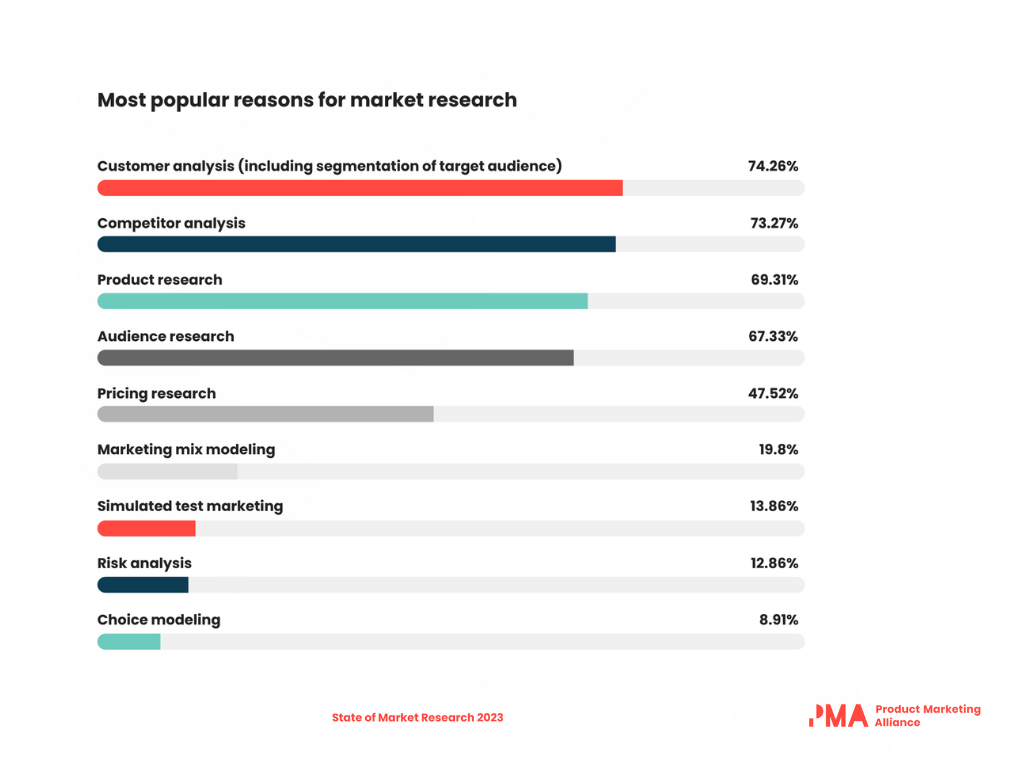Product marketing strategies undoubtedly lend themselves well to business-to-consumer, or B2C, environments – and are just as critical for success as they are in B2B organizations. If implemented effectively, the right product marketing strategies can lead to even greater marketing success and a very real uptick in company revenue.
Let’s dive deeper to learn more.
Defining B2C marketing
It's important to begin by defining exactly what we mean by B2C marketing.
When we talk about B2C marketing, we're referring to the activities of companies and brands that market directly to individual consumers. Sounds straightforward – but as product marketers, we know to dive a little deeper than just the definition at hand.
The next step is to consider who we define as individual consumers. Is it someone who is on the receiving end of the product? Or can it even be the person who is the buyer of the product? And how does product marketing fit into communicating to a consumer?
Regardless of how you slice and dice the B2C audience, it’s critically important to implement effective product marketing strategies in a B2C environment. So if you’re looking for tips on how to apply the product marketing spin on B2C marketing, I’ve got 7 strategies you can use to do just that.
7 effective B2C product marketing strategies
Understand your target audience
How can you effectively market to someone when you don’t even know who they are – or what makes them tick?
It’s integral for product marketing to clearly define and understand the target audience not just on the B2B side of the house, but on the B2C side of things as well. This work is done by conducting comprehensive market research, customer segmentation, and creating buyer personas. These pieces will serve as the building blocks to all marketing efforts undertaken and help a multitude of subteams, including demand generation, content marketing, and creative.

TIP: Gathering insights on customers is instrumental to this step. A few ways to do this are: Read online reviews, view competitor reviews, look through website data, take polls and surveys, or conduct customer interviews. You can learn more about translating the consumer insights you’ve found into product marketing strategies in our State of Market Research 2023 Report.
Define your unique value proposition
A unique value proposition is exactly that: A statement that outlines exactly what makes your product unique. In B2C marketing, this is integral. It’s what, after the catchy tagline written, really sells the consumer on engaging with the product in a thoughtful way. It’s what pushes the consumer to take that first step, the second, and the third. It shows them clearly what’s distinctive about your product.
Identifying and articulating these unique features is important. So is aligning these features with the benefits of the product being marketed. It’s also important to tie all of this up in a neat bow and highlight the competitive advantages your product has over other offerings in the marketplace. Presented to the consumer, this can mean real action taken in a way that directly impacts revenue.
Craft compelling messaging and storytelling
Storytelling, and the messaging that makes up that story, is incredibly powerful. It helps capture a consumer’s attention at a time when there’s more noise than ever. With the help of powerful storytelling and messaging, consumers will be able to see themselves in what’s been crafted. They’ll also be called to action, and have the potential to engage with the product.
Creating concise and powerful messaging related to the product is very much needed. How many times have you stopped reading when you felt things were too complicated? No consumer wants to feel lesser than others, especially when they’re attempting to identify whether a product is right for them.
Use the customer insights you’ve gathered and be sure to highlight the pain points when speaking with consumers. But don’t just focus on the negative. Be sure to draw their attention to the “what’s in it for me” with your product. Spell out in clear terms what they stand to gain (and what others have gained) as a result of using your product.
Remember that storytelling isn’t just an exercise. It’s a way to build an emotional connection that uses meaningful change stemming from the product’s value at its core.
Use a variety of marketing channels
Multiple marketing channels can be used to reach and engage consumers. Depending on the demographics you’re attempting to reach, all generational subsects may live on different areas of the internet. It’s why multi-channel marketing is so vital and effective.
Common tactics for the B2C world include social media, direct mail, and email to encourage some sort of action. Product marketing can inform all of these areas by providing real, tangible insights other marketing professionals can use to tailor messaging. As a result of this new level of intentionality, each channel can be maximized for effectiveness.
Create and leverage more engaging content
Content is meant to engage, educate, entertain, and, dare I say, even inspire consumers.
Product marketing has a direct impact on the quality of content being produced, thanks to the multitude of insights. This is an area where product marketing can act almost as a consultant, scanning over content to ensure that it addresses consumer pain points, highlights important product benefits, and ultimately encourages action.
Product marketing also serves as a great north star for the more visual elements required to create compelling content. We’ve all heard that we need more video and imagery. Product marketing can help champion the most compelling imagery or video. Perhaps there’s a feature known to really "wow" consumers. Product marketing can advocate and champion on behalf of these consumers to ensure the most effective marketing material is being created.
For example, in my recent work at a digital healthcare startup that provides value-based surgical and cancer care, the B2C Marketing team (aka Growth Marketing) was promoting many wonderful features of our cancer program. However, after conducting dozens of qualitative interviews directly with cancer patients, we found that mental health was a huge aspect of achieving better physical health outcomes during cancer treatment – and a feature that we had never highlighted even though it was a feature of our product.
This key piece of intelligence – direct from the mouths of real consumers – enabled us to be more concise, accurate, and direct in our messaging, and ultimately led to a huge increase in registrations for our program. Without this insight, we would not have known the motivating factors behind this particular group of consumers.
Measure and continue improving
Measuring is integral to the success of any marketing function. In product marketing, sometimes these metrics can be harder to tie down. The good news about marketing to consumers is that it’s exponentially easier to measure the effectiveness of product marketing strategies.
Be sure to determine key performance indicators relevant to B2C marketing. Do conversions matter most? Are there specific engagement metrics that you should be focused on? Does in-app adoption of a specific feature relate to a critical product marketing initiative?
No matter the case, it’s important to not only determine which information to gather, but also analyze said data, gather those insights, and continue learning based on the results. You’re only as good as what you’re producing, and consumers can be a fluid bunch. It’s important to never settle and to continuously iterate.
Leverage social proof more intelligently
We all know that, as humans, we’re more likely to trust reviews if they come from someone we know or someone we can relate to. At its core, it’s a part of the human experience. It’s also a great area that product marketing can better inform.
Identifying relevant product champions in the form of consumers is no easy feat. But when you have some sort of testimonial, and someone who is willing to publicly speak about the results of your product, you’ve got the potential to really make an impact.
Product marketing can ensure there’s a layer of intentionality behind the social proof being used. Even in something like questions to ask a consumer – product marketing should be right there, informing those questions through Net Promoter Score (NPS) surveys, direct consumer outreach feedback emails or customer advisory boards (which I strongly advocate every organization to build).
While this is simplifying it exponentially, suffice it to say, social proof is a cycle (and an effective one at that). Here’s that cycle: Garner genuine testimonials that directly speak to common consumer pain points, wants, needs and more -> market said social proof out to consumers -> watch consumers enjoy your product -> consumers now want to provide a testimonial related to the product.
Product marketing is there to help with the B2C audience
As evangelists of the product, we product marketing experts can truly redefine the way in which consumers interact and engage with offerings. After all, we know the market best, how the product is positioned, core feature functionalities, the value proposition, and more.
Using our super product marketing powers for good when marketing to consumers can lead to big results. Try implementing one (or dare I say, all seven) of the strategies I’ve provided above with your B2C audience. You may be pleasantly surprised with the results you see, and the real revenue generated as a result!


















 Follow us on LinkedIn
Follow us on LinkedIn



.svg?v=85af970283)